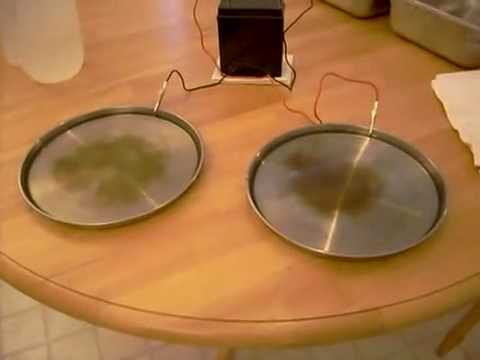Iontophoresis treatment is an ongoing process. Because the effects wear off you will need to get treatment once in a while.
Buying a device to use at home can be less expensive in the long run. Besides being more affordable and accesible, treating your hands or feet at home may be more convenient to you as well.
However purchase costs of iontophoresis devices are high. They start from about $500 and prices go up quickly.
In fact, commerical iontophoresis machines are insanely expensive and the most affordable device isn’t even that well reviewed.
It’s even more outrageous since these are basically very simple constructs consisting of a few items only.
The good thing is that this makes it fairly easy to build one yourself. Even a non-tech savvy individual can do it. Looking to build your own?
Here we go, a simple, step by step instruction guide on how to do it. And a short video explaining the process too.
How To Build An Iontophoresis Machine
Whether you just don’t want to shovel out the money to pay for one of these helpful machines or you are a “do-it-yourselfer”, building your very own Iontophoresis Machine could be the best option for you.
Materials Needed:
- 12 Volt Lantern Battery – $10 (the power source of your DIY iontophoresis device that’s going to supply the electrical current)
- 1 Pair of Alligator Clips – $2 (to transfer the currents to your hands or feet. One red and one black)
- Aluminum Pie Pans (for hands) – $15 (the pans are going to conduct the current from the battery to your hands or feet using the Alligator clips.
- Aluminum Pie Trays (for feet) – $15
Needed for iontophoresis treatment itself
- Water
- Salt (increases conductivity of the water ?/ true? see study…]]]
- Aquaphor (for cuts or irritated skin to make treatment more comfortable) – $7. You can use Duct tape to for soothing purposes too.

How To Build And Use It Step By Step
- Unscrew the screws a little bit so the metal from the alligator clips comes into contact with the battery conductors. (also remove any rings or jewelry from hands). Also, you can use salt to better conduct through your skin, but it is optional. Apply Aquaphor to avoid irritation if needed.
- Measure 2 cups of water and pour them evenly into the two pans. There should be just enough water to submerge your hands. Don’t fill the pans up to the top.
- Shake some salt into the pans only after you have done the procedure 4 or 5 times and are confident with your results. Then, connect one alligator clip to one pan from the positive screw of your battery and attach the other one to the other pan from the negative screw. Never use both clips on the same pan while attached to the battery because it will ruin your battery.
- Apply any Aquaphor you may need to your sensitive parts of your hands (like fingernails). Then, submerge hands in water of pans without completely touching the bottom with your palms.
- Keep your hands/feet submerged for 10 minutes, then reverse the charges by switching the alligator clips. Just switch the screws that the clips are attached to while keeping the other ends on the same pans. Then, submerge your hands again for another 10 minutes.
Conclusion
If you apply this step by step strategy using your own homemade iontophoresis machine* everyday for 5 days straight, you should see a dramatic decrease in the sweating of your hands or feet. (* it’s not so much a machine but more a simple DIY setup).
If excessive sweating is making you self-conscious or just getting on your last nerve, it may be time to build your own homemade Iontophoresis Machine.
Then, it’s just maintenance after that. You may only need to do the treatment every couple of weeks to keep your desired results.
Not sure about building your own device? Some hospitals offer a trial of the treatment so that you can see if it works for you.
Here’s an instruction video on how to build your own machine:
Image; Creative Commons
Can I use 4*4v 1.0ah battery???
Thank you for this blog and video.
What is the size of Aluminum Pie Pans and Aluminum Pie Trays? Do you remember where you bought them?
Thanks,
–T